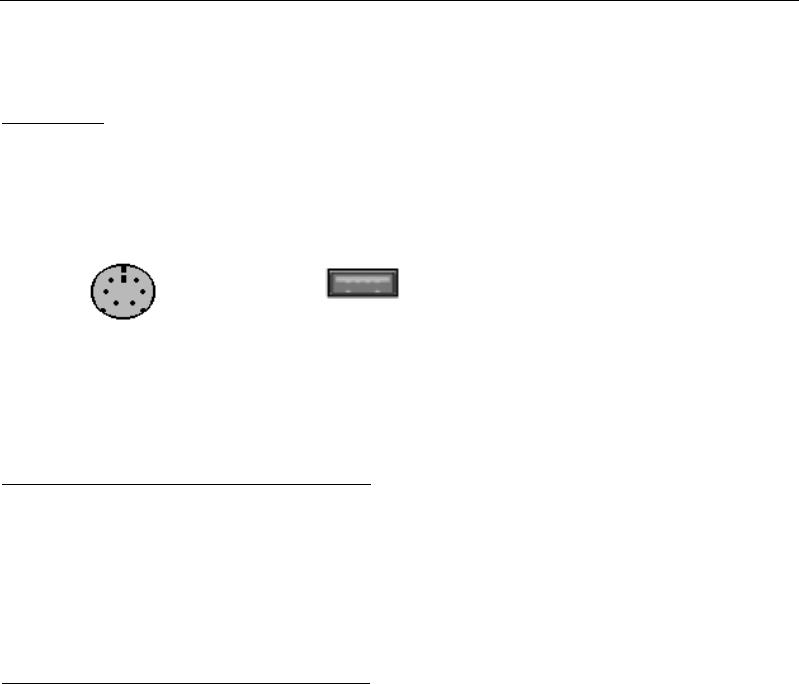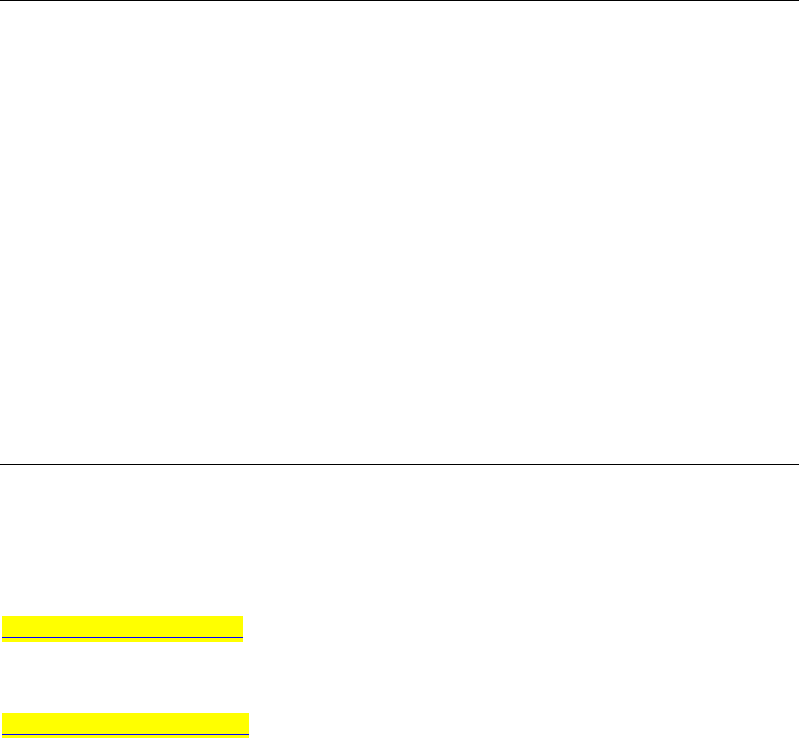Primax Electronics 202R71 Wireless Mouse User Manual users manual
Primax Electronics Ltd Wireless Mouse users manual
users manual

- 1 -
FCC Statement
This device complies with part 15 of FCC Rules. Operation is subject to the following two
conditions: (1) this device may not cause harmful interference, and (2) this device must
accept any interference received, including interference that may cause undesired
operation.
This equipment has been tested and found to comply with the limits for a Class B digital
device, pursuant to part 15 of the FCC Rules. These limits are designed to provide
reasonable protection against harmful interference in a residential installation. This
equipment generates, uses and can radiate radio frequency energy and, if not installed
and used in accordance with the instructions, may cause harmful interference to radio
communications. However, there is no guarantee that interference will not occur in a
particular installation. If this equipment does cause harmful interference to radio or
television reception, which can be determined by turning the equipment off and on, the
user is encouraged to try to correct the interference by one or more of the following
measures:
• Reorient or relocate the receiving antenna.
• Increase the separation between the equipment and the receiver.
• Connect the equipment into an outlet on a circuit different from that to which
the receiver is connected.
Copyright
Copyright 1999 Primax Electronics Ltd. All rights reserved. No part of this publication may
be reproduced, transmitted, transcribed, stored in a retrieval system, or translated into
any language or computer language, in any form or by any means, electronic,
mechanical, magnetic, optical, chemical, manual, or otherwise, without the prior written
permission of Primax Electronics Ltd.
Trademarks
Primax is a registered trademark of Primax Electronics Ltd. All other trademarks used in
this documentation are the sole property of their respective owners.

- 2 -
Setting Up Your Mouse
Hardware Installation
Important: Before connecting your mouse or installing the software, be
sure to identify the type of mouse port you are using (USB, PS/2). Refer to
the diagrams below if you are having difficulty determining what kind of
port your mouse uses.
PS/2 Port USB Prot
Connecting the PS/2 Mouse
Note: Before coneect the mouse to your system, please make sure your computer is off.
• Turn off your computer.
• Connect the mouse cable to the PS/2 (6-pin) mouse port.
• Turn on the computer.
Connecting the USB Mouse
Note: To use the USB mouse, you need to have Windows 98 / 2000 / ME installed on
your computer.
• You don’t need to turn off your computer before connect your USB mouse.
• Plug the rectangular USB mouse connector into the USB port (normally in the back
of the PC).
• Insert the software diskette into your disk drive and follow the onscreen instructions
to install the device driver.
- 3 -
Installing Mouse Suite™ Software
To use all of the features of your new mouse, you must install the Mouse Suite™
software on your computer. Uses the following guide to properly install the Mouse
Suite™ software.
For Windows 95, Windows 98, Windows NT 4.0, Windows 2000 and Windows ME:
• Start Windows and insert the Mouse Suite™ installation disk into the disk drive.
• Click the Start button and then select Run.
• From the Run dialog box, enter <drive>: Setup and click OK. For example, if the
disk is in drive A, enter A:\Setup.
• Follow the onscreen instructions.

- 4 -
Using the Wheel
Note: This section is for wheel mouse only.
Your new mouse may have a wheel that can be used in two ways:
• Rotate it to use it as the wheel.
• Click it to use it as the wheel button.
Important: Universal Scrolling must be enabled in order to use scrolling
functions in applications not compatible with Microsoft Office 97.
Scrolling
The wheel on your mouse can be used to scroll through most applications with a
scroll bar.
• To scroll with your mouse, simply rotate the wheel on your mouse forward or
backward.
AutoScrolling
AutoScroll allows you to automatically scroll through a document without having
to move the mouse or mouse wheel constantly.
• To AutoScroll while in a document, click the mouse button designated as
AutoScroll. An origin mark ( ) will appear at your pointer position. To start
AutoScrolling, move your pointer vertically, horizontally, or diagonally away from the
origin mark. AutoScroll speed increases as the pointer is moved away from the
origin mark. To stop AutoScrolling, press any mouse button or rotate the wheel.
Zooming
In some Microsoft Office 97 compatible applications (e.g. Microsoft Word 97),
additional zooming functions are available. You can use the zooming function to
“zoom in” for a closer look at a page or “zoom out” to see more of a page.
• To zoom in, hold the Ctrl key down and rotate the mouse wheel forward.
• To zoom out, hold the Ctrl key down and rotate the mouse wheel backward.

- 5 -
Mouse Suite™ Features
Mouse Suite™ includes a lot of exciting features or functions that help you to
increase your productivity with your new mouse.
! To find your Mouse Control Panel, follow these steps:
On computers running Windows 95 / 98, Windows NT4.0 or above, click the Start
button. Then click on Control Panel under the Settings menu. Now double-click on
the Mouse Icon.
Button Functions
Accessing the Buttons page allows you to customize the function of each mouse
button. The default settings for your mouse buttons are as follows:
• Left Button Primary Mouse Button (standard click and drag action)
• Middle or Wheel Button Quick / Auto Scroll
• Right Button Context Menu
Magnifier
With Magnifier designated as a button function, you can magnify the screen area
around your pointer with the click of a button.
HyperLink
With HyperLink designated as a button function, you can open the application or
document of your choice with a simple click.
HyperGrid
HyperGrid incorporates nine common Windows tasks on one easy to use grid so
you don’t have to move to various screen areas to perform a task.
To use the HyperGrid, press and hold the assigned mouse button to display the grid.
Without releasing the button, move the pointer to an icon on the grid. Release the button
to execute the command associated with that icon.
- 6 -
Minimize Minimizes the active window.
Recall Restores / Maximizes the active window.
Close Closes the active window.
Next Window Makes the next window active.
Context Menu Emulates the Right Mouse Button action.
Vertical Scroll Jumps to the vertical scroll bar.
Start Activates the Windows Start menu.
Horizontal Scroll Jumps to the horizontal scroll bar.
Resize Jumps to the size grip to resize the active window.
Orientation
The Orientation feature allows you to recalibrate your mouse so you can use it in
a more comfortable position.
Pointer Wrap
With Pointer Wrap enabled, when the pointer reaches the edge of the screen, it will
automatically ‘go through’ and appear on the other side.
Pointer Vanish
When Pointer Vanish is enabled, the pointer will be conveniently hidden from view while
you are typing text. The pointer will automatically reappear when your mouse is used
again.
Sonar
The Sonar function helps you locate your pointer if you are having difficulty finding it. Press and
release the Ctrl key to activate the Sonar function. This function does not interfere with other Ctrl
key functions.
Slow Motion
Enabling Slow Motion allows you to temporarily slow down pointer movement for
increased precision by pressing and holding the Shift key. This function does not
interfere with other Shift key functions.
X Focus
With X Focus enabled, you can make an open window active simply by moving the
pointer over its title bar. This function is useful if you want to alternate between several
open windows without clicking.
Auto Jump
When Auto Jump is enabled, the pointer will automatically appear on the default button
(e.g. OK) whenever a dialog box is opened.

- 7 -
Troubleshooting
Reviewing the following section may help you diagnose any problems you are
having with the operation or installation of your new mouse. If the problem you
are experiencing is not referred to below, or the suggested solutions do not solve
the problem, please contact our Technical Support staff.
• Why isn’t my pointer moving smoothly?
Your mouse ball and ball cage may require cleaning. Refer to the Maintenance
section for proper cleaning procedures.
• Why aren’t the scrolling functions of my mouse working with my
notebook?
On your notebook, you may need to disable the trackball, touchpad, or J-key in the
BIOS and enable the external port in order to successfully use all of your mouse’s
functions.
• My USB mouse was not detected by the system and won’t work!
Please check through the below items:
• Make sure your USB mouse was completely plugged into the USB port.
• Check if the USB port in your system worked properly in the Device Manager
page of System Properties. If there is a circled exclamation point through the
icon it means this universal serial bus controller has some problem. Please try
to remove and install it again or contact the technical support of your PC
manufacturer.
• Check the version of your operating system. If you are not running Windows
98, Windows 2000 or above, please update your operating system such that
the USB device can be enabled.
• Make sure that the USB port was enabled in the BIOS setup.
• Why isn’t there a pointer on the screen? or Why isn’t the pointer
responding to mouse movement?
Your mouse is not being properly detected.
• Make sure your mouse cable is connected properly to the correct port.
• Your serial or PS/2 port may be improperly configured (refer to your computer’s
documentation for proper configuration).
• The IRQ/address settings of other system devices (e.g. modem card) may be in
conflict with your mouse’s settings. Check the IRQ/address settings for
conflicts, and change them if required.

- 8 -
Maintenance
If the pointer skips or move abnormally, clean the ball of your mouse by following
these steps:
• Remove the retainer ring to remove the ball.
• Wipe the ball with a clean, lint-free cloth, and then blow carefully into the ball-cage
to dislodge dust and lint.
• If the rollers are dirty, clean the rollers using a cotton swab moistened lightly with
isopropyl (rubbing alcohol). After cleaning, make sure the rollers are still centered
in their channels. Make sure that fluff from the swab is not left on the rollers.
• Replace the ball and retainer ring.
Technical Support
If you are experiencing difficulty with the installation or use of Mouse Suite™,
please contact our Technical Support staff. We will be more than happy to assist
you with any problems you may have.
Contact us by Email:
Help@mail.primax.com.tw
Visit our Website:
http://www.primaxelec.com